Did you know that over 80% of diagnostic errors in radiology stem from subtle anomalies that even trained clinicians can miss? Thanks to medical imaging AI , those missed opportunities are fast becoming relics of the past. This article dives deep into how artificial intelligence is enabling clinicians to detect hidden conditions instantly, reshaping patient outcomes, and igniting bold debates across the healthcare landscape. Read on for a firsthand look at the disruptive tech, ethical dilemmas, and breakthroughs changing medicine as we know it.
- Understand why medical imaging AI is revolutionizing diagnosis
- Learn about the deep learning techniques fueling breakthroughs
- Discover real-world applications—and controversies
- Grasp how patient outcomes and clinical practice are evolving
- Navigate the ethical and practical debates shaping the future
Unveiling the Future: How medical imaging AI Is Shaping Healthcare
In an era where time can mean the difference between life and death , medical imaging AI is at the forefront of healthcare transformation. By leveraging advanced artificial intelligence , hospitals are able to analyze vast arrays of medical images —from MRIs to CT scans—in the blink of an eye. Unlike previous generations that depended solely on the human eye , AI solutions work around the clock, scanning every pixel, highlighting faint anomalies, and surfacing early signs of diseases that routine review could easily overlook.
The power of AI isn’t just about speed; it’s about precision and consistency. Medical imaging AI detects patterns in imaging modalities that even seasoned radiologists might miss after hours on shift. From identifying lung cancer nodules to tracking progression in breast cancer , AI models complement human expertise and reduce the risks of subjective errors or cognitive fatigue. This edge AI empowers clinicians with a level of diagnostic confidence and efficiency that is truly unprecedented.
With AI-driven platforms increasingly woven into everyday clinical practice , the intricate relationship between human and machine is fueling debate—and collaboration is driving tangible improvements in patient care . Let's explore just how far these innovations have come, and where they're heading next.
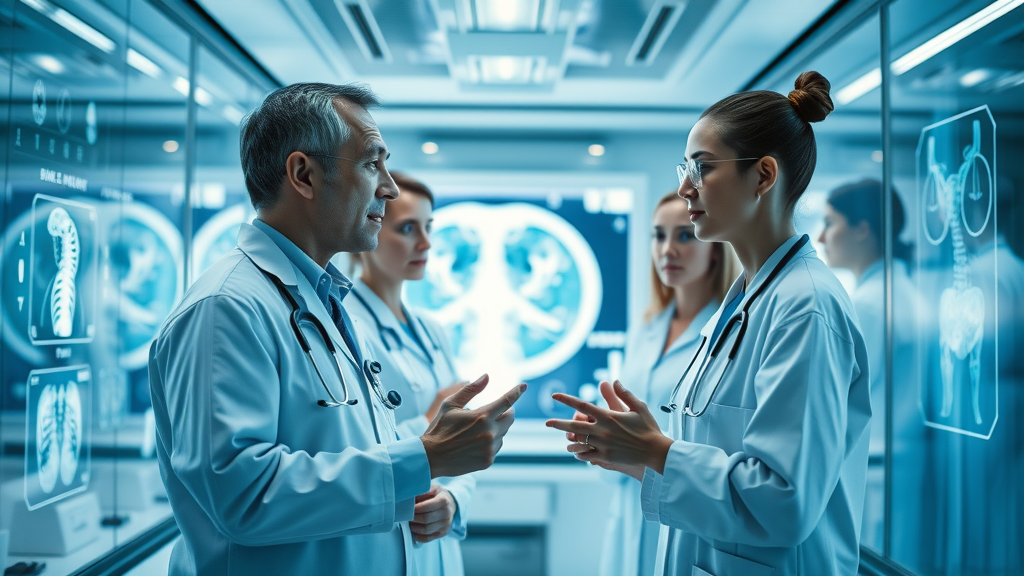
Comparing Traditional vs. medical imaging AI Approaches:
| Feature | Traditional Imaging | medical imaging AI |
|---|---|---|
| Detection speed | Moderate | Instant |
| Hidden condition detection | Limited | Advanced |
| Reliance on human analysis | High | Lower |
| Consistency | Variable | High |
| Integration with clinical data | Rare | Common |
The Science Behind medical imaging AI: From Neural Networks to Deep Learning Techniques
The magic behind medical imaging AI rests largely on two underpinnings: machine learning and deep learning —particularly the use of neural network technologies. Traditional medical image analysis involved manual review, but with the advent of AI algorithms, machines can now be taught to spot a wide range of disease signatures in medical images . Automated AI models learn from vast data pools, identifying minute details invisible to most clinicians. This deep data mining enables more accurate, earlier, and reliable diagnosis—often within seconds.
Machine learning AI systems sift through millions of prior scans, finding shared traits among patients with difficult-to-detect diseases. By doing so, they build decision trees and neural network frameworks that suggest likely diagnoses when similar features appear in new patients. Edge AI allows results directly at the point of care—reducing time to treatment and greatly improving patient outcomes. This transformative approach to ai in medical imaging is changing how physicians evaluate everything from trauma cases to chronic illness management.
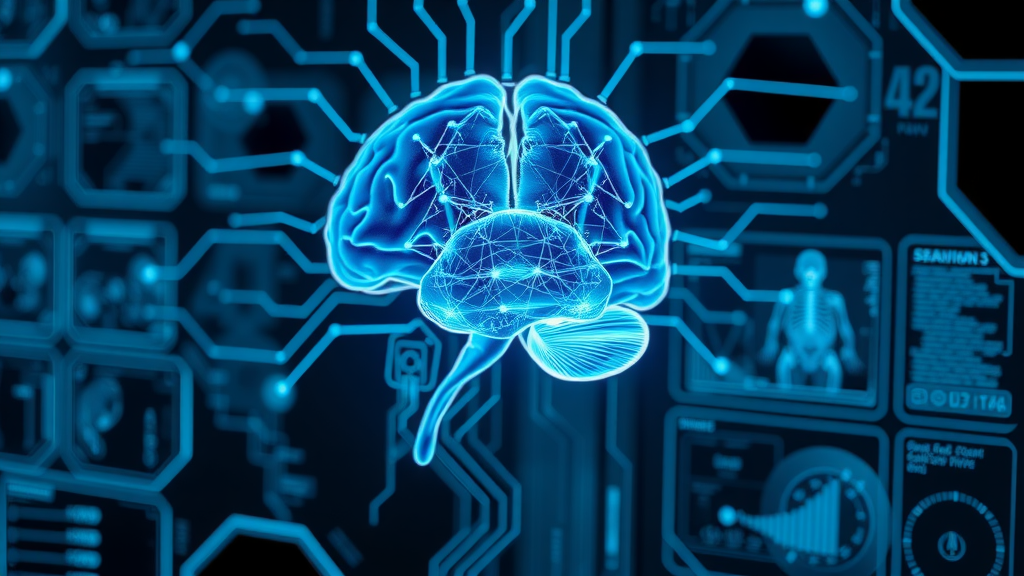
How machine learning and neural network technologies transform medical image analysis
The union of neural networks and machine learning has created a seismic shift in how medical images are read and understood. Unlike rigid rule-based systems of the past, today’s AI models are dynamic and ever-learning, continuously updating themselves as they encounter more data. These technologies mimic the architecture of the human brain, processing complex patterns, shapes, and subtle contrasts that inform clinical decisions. Their ability to discover hidden connections in a wide range of imaging modalities gives them an extraordinary edge over traditional screening methods.
Deep learning techniques enable systems to scour through pixel-level data and cross-reference findings with patient histories and clinical records. For example, in lung CT screening, neural networks can identify early-stage lung cancer nodules with a specificity and sensitivity that rivals, and sometimes surpasses, the performance of experienced radiologists. This AI-driven approach not only boosts accuracy but also offers consistent results—addressing a long-standing challenge in standard image interpretation where human judgment can vary under stress or fatigue.
Perhaps most importantly, these AI solutions offer scalable expertise. While there is a global shortage of radiologists, especially in resource-limited settings, robust neural network platforms can provide top-tier diagnostic support wherever there is access to digital images. This scalability is a game changer for population-level screening and global health parity.
Why deep learning techniques have revolutionized patient care
Deep learning techniques are having an outsized impact on patient care across a spectrum of diseases. By fine-tuning AI systems with datasets from varied radiology departments worldwide, developers have produced models capable of adapting to a wide range of clinical circumstances. From subtle microcalcifications in breast cancer mammography to complex stroke identification on emergency brain scans, the application of advanced deep learning is leading to earlier, more accurate intervention, which is at the heart of improved patient outcomes.
This revolution isn’t only about detection. Deep learning-powered tools bring actionable insights to the bedside, flagging changes that could indicate disease progression or treatment response. Physicians can now integrate AI-generated reports with laboratory data, enhancing decision-making for everything from surgical planning to individualized therapy selection. In short, deep learning techniques have set a new gold standard for evidence-based, real-time medicine—empowering clinicians and improving patient lives like never before.
“Every pixel is reviewed, every risk assessed—AI doesn’t tire, blink, or miss fleeting clues.” — Expert in AI in medical imaging
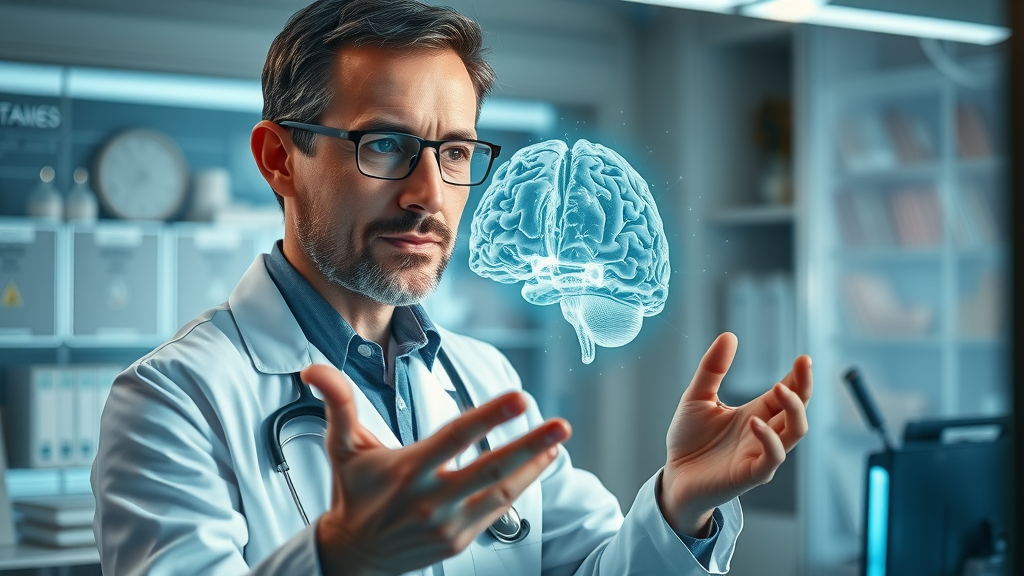
Real-World Impact: medical imaging AI in Cancer Detection and Patient Outcomes
The impact of medical imaging AI is perhaps most visible in its role in cancer detection . Early identification of cancers like lung cancer and breast cancer remains a global challenge, but AI technology is changing that equation. By leveraging deep learning algorithms, modern imaging systems are uncovering early signs of malignancy with unprecedented speed and accuracy, giving patients a fighting chance long before symptoms surface. This shift from reactive to proactive care is revolutionizing oncology worldwide.
AI-powered decision support isn’t limited to detection. These systems recommend personalized action pathways based on nuanced image interpretations, supporting oncologists as they choose between biopsy, surveillance, or immediate intervention. Such advanced triage increases the likelihood of catching diseases in their earliest—and most treatable—stages. As a result, patient survival rates are trending upward, while unnecessary procedures are on the decline, exemplifying how AI is driving new standards for patient outcomes .

medical imaging AI in lung cancer and breast cancer detection
Lung cancer detection has always challenged even the most experienced radiologists, given the disease’s subtle early manifestations. With neural network-powered AI solutions sifting through thousands of CT scans, early signs—such as tiny, irregular nodules—are detected well before they become symptomatic or visible through standard screening. These breakthrough AI models have demonstrated improved sensitivity without a corresponding spike in false positives, making them invaluable for population-wide screening initiatives.
Breast cancer diagnostics have also reached new heights with deep learning techniques. AI-enhanced mammography reviews identify microcalcifications, asymmetrical densities, and unusual architectural distortions at a scale and consistency not possible through traditional review. This shift is particularly transformative for high-risk groups, improving early diagnostics and lessening the emotional and financial burden of late-stage treatment. As adoption grows, the field is witnessing not just faster, but better patient care across the cancer detection pipeline.
Yet, the breadth of AI in medical imaging spans well beyond oncology. Next-generation AI algorithms are being trained for neurological disorders, orthopedic injuries, and cardiovascular anomalies, signaling a new era of all-encompassing diagnostic vigilance.
Enhancing the human side: How AI supports radiologists and patient care
While technological advancement is often framed as a threat to jobs or expertise, medical imaging AI is emerging as a powerful collaborator for radiologists—not a replacement. Complex AI models sift through routine or high-volume studies, highlighting anomalies and prioritizing urgent cases for expert review. This triage approach enables radiologists to focus their cognitive resources where it matters most—complex diagnoses, multidisciplinary planning, and one-on-one patient care.
Moreover, AI solutions offer decision support by cross-referencing imaging results with lab data, genomic profiles, and historical trends, making the path to correct diagnosis or optimal treatment clearer. As a result, clinicians are empowered to reassure patients with newfound confidence in their diagnoses, answer questions clearly, and provide more personalized, timely care. This blend of machine precision and human compassion is elevating the standard for clinical practice and patient trust alike.
Ultimately, rather than threatening the art and science of medicine, AI in medical imaging extends the reach, reliability, and real-time capacity of radiology teams around the globe.
Beyond Detection: Clinical Practice Transformations With medical imaging AI
The integration of artificial intelligence into diagnostic workflows is extending far past basic anomaly detection. medical imaging AI is now embedded in every stage of the care continuum—from triage to final follow-up—bringing about a paradigm shift in the very fabric of clinical practice . Hospitals are harnessing AI not just for radiology, but for a wide range of specialties, guiding tailored communications and continuous improvements in patient outcomes.
Automation of routine reads, instant flagging of critical findings, and real-time analytics are cutting down wait times and freeing skilled clinicians to handle complex, high-value tasks. With data integration at its core, medical imaging AI merges information from EMRs, genomic analytics, and cross-modal imaging, unlocking novel insights and actionable intelligence that were previously hidden beneath data silos.
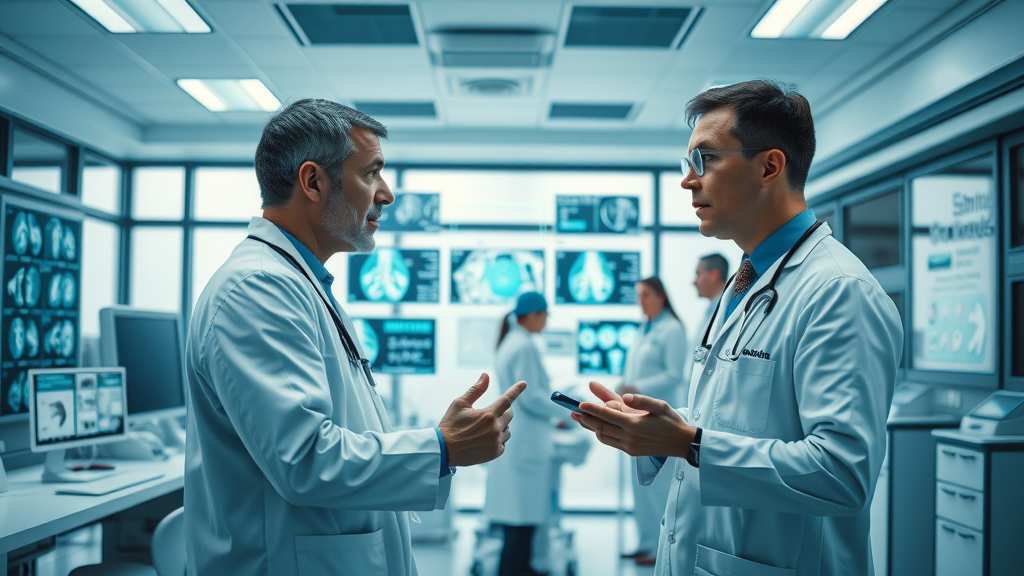
How artificial intelligence is woven into every stage of diagnosis
From the moment a patient walks in the door, AI-enhanced systems are at work. Initial triage leverages AI to recommend imaging studies based on symptoms and risk factors, while subsequent scan analysis is expedited through deep learning models honed on millions of images. AI in radiology flags results that require urgent attention, ensuring rapid intervention for critical cases such as stroke, myocardial infarction, or acute trauma.
Even after diagnosis, AI models continue to monitor post-treatment scans and integrate feedback—constantly learning and adapting. This continual feedback loop results in ever-improving clinical algorithms and richer understanding of disease trajectory. As a result, clinicians and healthcare administrators see not only more accurate readings but also better resource utilization and overall improvement in clinical practice .
The real power of AI in medical imaging lies in its ability to seamlessly connect every diagnostic stage, reducing bottlenecks and supporting physicians in delivering optimal care, every time.
From image to action: Improving patient outcomes across specialties
medical imaging AI extends its influence from radiology outward, impacting virtually every part of the patient care journey. By linking imaging results with clinical guidelines and patient-specific data, AI platforms support rapid escalation or de-escalation of care. Whether it’s confirming a fracture, monitoring tumor response, or detecting silent cardiovascular threats, these tools move diagnosis from static reports to dynamic care actions.
Subspecialties across medicine now recognize the transformative effects of AI-driven imaging feedback. Neurology, orthopedics, cardiology, and even emergency medicine are leveraging AI solutions for more timely, precise, and effective treatment. Perhaps most impactful is the benefit seen in underserved or remote areas, where AI platforms supplement limited local expertise, ensuring more equitable patient outcomes across the healthcare spectrum.
The result? Shorter wait times, fewer diagnostic errors, improved patient outcomes, and a new culture of continual innovation within clinical practice—anchored by artificial intelligence.
Controversies and Challenges: Can medical imaging AI Replace Human Expertise?
Despite its promise, the rise of medical imaging AI is not without controversy. As AI solutions edge ever closer to diagnostic autonomy, clinicians, ethicists, and patients alike are asking critical questions: Can machine learning entirely replicate the intuition and nuance of human expertise? How do we mitigate risks associated with algorithmic bias, privacy, and system errors? And most importantly, who bears responsibility when AI and human opinions clash?
Trust issues and ethical debates have gained prominence, especially as regulatory agencies grapple with approving AI-driven diagnostic tools. The evolving relationship between clinical oversight and AI-driven recommendations means that transparency and rigorous validation must remain top priorities as the field advances.

Examining ethical dilemmas and clinical trust issues
There are legitimate concerns around the black-box nature of some AI algorithms. If a machine learning model makes an error—whether due to bias in the training set or unforeseen patient factors—patients could be put at risk. That’s why clinical trust remains at the core of AI adoption. Ongoing debates center around how to establish robust human-AI collaboration models that maximize clinical value while maintaining oversight. Regular audits and transparency are essential to build credibility with both medical professionals and patients.
Privacy adds yet another layer to this puzzle. As AI systems require massive volumes of sensitive imaging data, safeguarding patient confidentiality is non-negotiable. Compliance with legal standards such as HIPAA in the U.S. or GDPR in Europe means ensuring ironclad controls on how data is stored, accessed, and used for ongoing AI model improvement.
Balancing machine learning innovation with patient-centered care
While innovation is crucial, keeping patient care at the heart of every technological advancement is paramount. Striking a balance between leveraging AI’s computational power and retaining essential human empathy is what will define the next generation of medicine. Rigorous validation, ongoing clinician education, and open conversations with patients are all critical as AI solutions continue to evolve.
- Bias in AI algorithms
- Patient data privacy
- Regulatory and legal hurdles
- Human-AI collaboration models
By addressing these issues head-on, the medical community can realize the full potential of AI without inadvertently compromising on safety, equity, or trust.
The Road Ahead: How medical imaging AI and Artificial Intelligence Will Elevate Clinical Practice
As we look toward the future, the medical field stands at the cusp of even greater transformation. The integration of AI in medical imaging with broader clinical decision support tools heralds a new era—one where personalized, preventative, and participatory care becomes standard. Merging AI insights from medical images with genomics, pathology, and EMR data promises unprecedented accuracy in diagnosing complex conditions and crafting individualized care strategies.
Healthcare systems adopting these innovations are already seeing dramatic improvements in efficiency, evidence-based practice, and resource management. The convergence of AI-driven imaging with next-generation digital health platforms is likely to set new benchmarks for patient outcomes across all demographics and regions.

Integrating AI in medical imaging and clinical decision support
Tomorrow’s hospitals will treat medical data as a living network—streams of images, genetics, lab results, and lifestyle factors converging to guide real-time decisions. AI platforms will not only read and highlight meaningful changes in imaging modalities but also suggest optimized care paths for each patient based on aggregated data. By supporting seamless communication and data flow between specialties, these AI solutions will enable faster, more accurate cross-disciplinary care.
Decision support will extend well beyond “yes/no” answers, offering nuanced, context-sensitive recommendations. As a result, the time from scan to treatment will shorten, errors will decrease, and health systems will operate with greater agility. In turn, this will free clinicians to focus on the uniquely human aspects of care—from building patient relationships to exercising clinical judgment in complex scenarios.
Exploring new frontiers: Gen AI, federated learning, and beyond
The horizon of medical imaging AI is broadening. Generative AI (Gen AI) promises to simulate entirely new types of scans from synthetic data, perfect for rare or hard-to-capture disease states. Meanwhile, federated learning models allow hospitals to collaborate and train AI without sharing raw patient data, enhancing algorithm quality while maintaining strict privacy. These innovations, combined with edge AI and real-time analytics, are setting the stage for a more secure, ethical, and patient-centered future in digital medicine.
Ultimately, the ultimate promise of artificial intelligence in healthcare is not just smarter machines—but a fundamental reimagining of what it means to diagnose, treat, and care for every patient as an individual.
People Also Ask
Is AI used in medical imaging?
Yes, artificial intelligence is actively used across a wide range of medical imaging fields. Hospitals and clinics use AI systems to automate the analysis of X-rays, CT, MRI, and ultrasound images, expediting diagnosis and supporting clinicians with detection of subtle or hidden conditions. AI models are especially valuable for screening high volumes of studies, identifying complex patterns in imaging modalities, and flagging urgent findings faster than traditional workflows allow. This application of ai in medical imaging is rapidly expanding on a global scale.
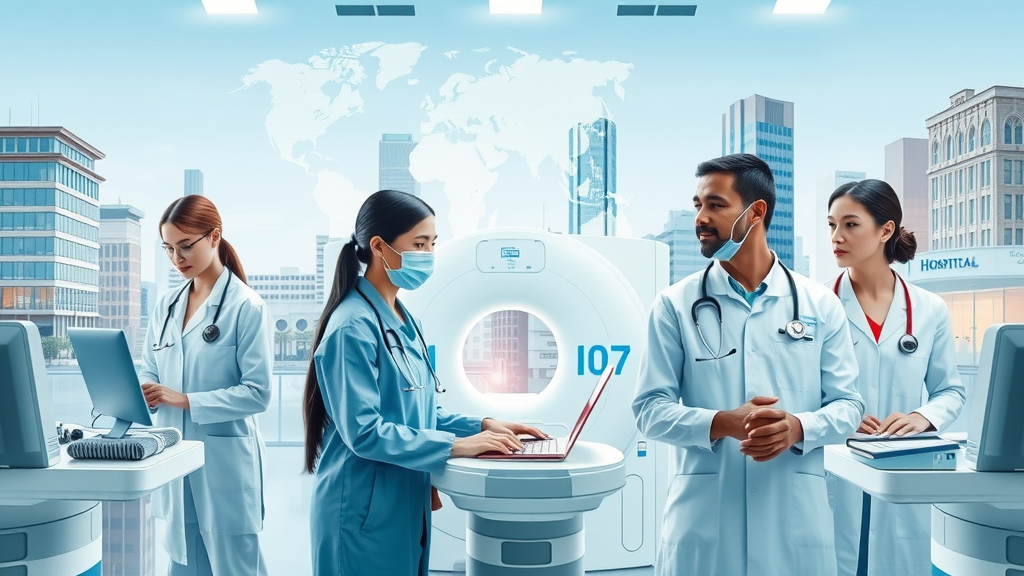
Will medical imaging be replaced by AI?
While medical imaging departments are increasingly using AI solutions, human expertise remains essential. AI is best seen as an augmentation tool that streamlines and supports, not replaces, radiologists and technologists. Advanced AI models speed up detection and increase accuracy, but clinical interpretation, judgement, and empathy require human oversight. The future of ai in radiology is collaborative—the synergy between human clinicians and AI systems will result in more efficient and trustworthy patient care.
Can AI level up medical imaging?
Absolutely— AI in medical imaging is widely recognized as a key driver of innovation in healthcare today. State-of-the-art AI models enhance traditional imaging by providing instant analysis, highlighting early signs, reducing human oversight errors, and enabling integration of multiple data sources. This levels up imaging performance, leading to more precise and timely interventions and fundamentally improving patient outcomes across nearly every medical specialty.
What is Gen AI in medical imaging?
Gen AI , or Generative AI, refers to a new class of artificial intelligence that can create new, realistic medical images by learning from large existing datasets. Gen AI can generate synthetic scans for training, simulate rare conditions for research, and even help reduce bias in AI by supplementing underrepresented image types. This technology stands poised to bolster clinical practice, research, and algorithm fairness in ways conventional machine learning could not.

Frequently Asked Questions on medical imaging AI
What are the most promising deep learning techniques in AI in radiology?
Some of the most promising approaches include convolutional neural networks (CNNs) for pattern recognition in medical images, transfer learning to quickly adapt models to new diseases or modalities, and federated learning for secure multi-site collaboration. Together, these methods are supercharging ai in radiology with greater accuracy, adaptability, and patient safety. Deep learning techniques are fundamental for high-stakes fields like cancer detection and trauma assessment.
How does medical imaging AI improve patient outcomes?
Medical imaging AI improves outcomes by enabling earlier, more accurate diagnosis, reducing errors, and guiding evidence-based interventions. AI models can highlight subtle findings in images, ensuring that critical conditions aren’t overlooked. By empowering clinicians with real-time, data-driven decision support, these AI solutions are driving shorter treatment delays and higher survival rates, especially in fast-moving scenarios like stroke or cancer care.
Are there risks associated with machine learning and neural networks in healthcare?
Yes, risks exist—including algorithmic bias (where AI may underperform for certain populations), data privacy concerns, and potential overreliance on automated models. Mistakes in data labeling or insufficiently diverse training sets can introduce biases or errors. That’s why ongoing validation, regulatory oversight, and a strong partnership between clinicians and AI are essential for the responsible deployment of artificial intelligence in healthcare.

Key Lessons from the Rise of medical imaging AI
- AI augments—not replaces—skilled clinicians
- Early adopters are seeing improved clinical practice efficiency
- Collaboration ensures both patient safety and innovation
- Continuous learning, transparency, and ethics are critical
Why Now Is the Time to Trust—and Question—medical imaging AI
Actionable Step: Embrace AI-driven advances while demanding transparency and human accountability—only then will medical imaging AI reach its full potential to benefit both clinicians and patients.
 Add Row
Add Row  Add
Add 




Write A Comment